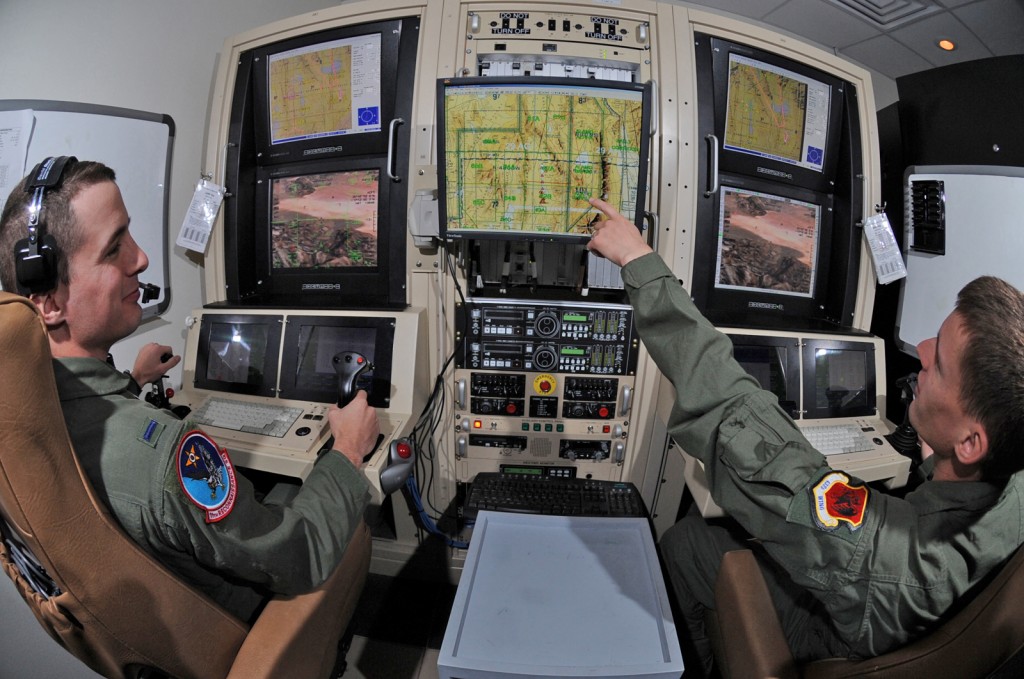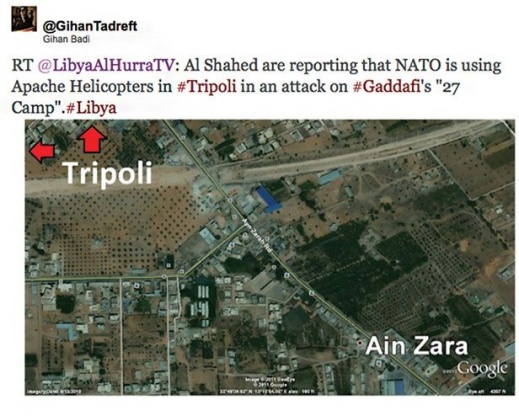
By Dan Gettinger
A solitary drone flies over a far away mountain valley in Afghanistan operated by a pilot thousands of miles away on a distant base in the Mojave desert. The drone is the icon of remote-controlled warfare. In Out of the Mountains: The Coming Age of the Urban Guerrilla, David Kilcullen presents an alternate future of warfare; one that is grounded the megatrends of population growth, urbanization, littoralization, and global networked connectivity. Based on recent conflicts, he projects that in the upcoming decades, conflict will be most often found in dense cityscapes, where transnational criminal and terrorist organizations rule over cluttered periurban slums and where governments are only one more armed group in competition for control. Amidst this bleak setting, the drone is but one part of the rise in worldwide connectivity that is expanding participation in war.
The future of cities and of conflict will be bound up with exponential increases in population, the tendency for people to settle in cities and on the coast (urbanization and littoralization), and the accessibility of communications technology that allows global connectivity. Evidence of these trends can be seen in cities worldwide and have numerous associated implications ranging from pollution to food and water scarcity. Kilcullen argues that taken together with these concerns there should be an understanding that war – Afghanistan being the exception – is also increasingly set in urban environments and consists of irregular tactics. Consider the fighting in Benghazi or the decades long conflict in Mogadishu or the 2008 attack on Mumbai that killed 164 people. The operational environment of future conflicts will be very different from what it has been in the past, requiring a new line of strategic thought that encompasses the effects of these four megatrends.

The spreading accessibility of global communication devices and internet connects people worldwide at a lower cost than ever before. Connectivity has a strategic and tactical aspect to it. This is the focus of chapter four in Out of the Mountains called “Conflict in Connected Cities,” which is the climactic chapter in the book. The ease of global networked connectivity expands the traditional military understanding of a theater of operations from one that is grounded in a physical locale to include new virtual theaters. Cyberspace creates “conflict spaces that draw in populations and forces with no geographical connection to the conflict, and which may be located anywhere on the planet,” explains Kilcullen. Similarly, drones defy a geographical boundary to conflict by extending participation to pilots who are nowhere near the fighting.
Kilcullen argues that the term “remote-controlled warfare” is too narrowly associated with drones. The spread of information networks adds a new dimension to remote war by making it more accessible than the sophisticated technology of Predators and Reapers. To illustrate this point, Kilcullen draws on the example of the 2008 attack on Mumbai by the Pakistani state-supported terrorist group Lashkar-e-Taiba. The attack is important because it illustrates how a sophisticated operation in another country can be controlled remotely only by having access to commercially available communication technology such as GPS, social media and satellite phones. The connectivity between the control node in Pakistan and the attacking group in Mumbai is evidenced by the role of Abu Dera Ismail Khan, the leader of the ground team who was killed early in the attack. Khan was assigned by the command node to divert the attention of Indian law enforcement from the main thrust of the terrorist attack. The fact that the group went on to conduct a complicated attack on the multiple style points in the city “underlines the continuous and intimate control that the Karachi operations room exercised over the teams at the main objectives.” The team leader was expendable because each of the other terrorists communicated directly to Karachi where the control node monitored and issued instructions in reaction to the Indian response. As a networked operation set in a coastal megacity, Kilcullen argues that the attack on Mumbai is paradigmatic of urban terrorism. In the same way that Predators can be flown from thousands of miles away, advances in information networks are permitting other guerrilla remote-controlled operations.

Networked connectivity is democratizing participation in conflicts. In a 2012 article for MIT Technology Review, John Pollock tells the stories of a number of tech-savvy individuals in Europe and the United States who assisted Libyan rebels in Benghazi by way of social media and satellite communications. For example, Steen Kirby, a high school student in the state of Georgia, “pulled together a group through Twitter to quickly produce English and Arabic guides to using an AK47, building makeshift Grad artillery shelters, and handling mines and unexploded ordnance, as well as detailed medical handbooks for use in the field.” (Pollock) Many other non-state actors participated. Anonymous attacked Libyan websites and international virtual support networks remotely organized the delivery of sea-borne humanitarian aid to rebel forces. In Libya, unlike in Tunisia or Egypt, information networks were utilized for more than waging a propaganda war. Kilcullen argues that they changed the calculus of power on the ground, becoming “the backbone for the uprising” by “helping synchronize and coordinate the combat power of a diverse group of non-state actors.” Here again, like in Mumbai, virtually networked individuals played a direct support and command role in the fighting taking place on the ground.
The role of information networks in Libya are what Kilcullen explains as “one of the earliest and clearest examples” of the electronic levée en masse. The concept of electronic levée en masse comes from a 2006 paper by Audrey Kurth Cronin (PDF), a British author and senior researcher at Oxford University. Cronin argues that the rise of the information age is transforming participation in war in ways that are similar to the effects that new publishing and communication methods had on the mass mobilizing militaries of the Napoleonic War. The deregulation of the press in France between 1789 and 1793 prompted a rush of publishing in the form of cheap pamphlets and prints. The democratization of communications was crucial to developing the conditions – such as a popular sense of national identity and the responsibilities of citizenship – for the repeated calls for mass mobilizations during the Napoleonic Wars. Cyberspace is transforming communications in the information age and creating the conditions for what Cronin calls “cyber-mobilization.” In her 2006 paper for the U.S. Army’s Parameters Magazine, Cronin writes, “Like the levée en masse, the evolving character of communications today is altering the patterns of popular mobilization, including both the means of participation and the ends for which wars are fought.” (Cronin, 84) Libya exemplifies how cyberspace adds a new dimension to war in which individuals with little other affiliation to the conflict than an internet connection can participate remotely.

Kilcullen discusses more than just networked connectivity in Out of the Mountains. He parses the lessons from around a dozen examples that range from Jamaican transnational criminal organization Shower Posse to the governing system of the Taliban in Afghanistan. As with his previous books The Accidental Guerrilla and Counterinsurgency, Kilcullen is particularly interested in how criminal and terrorist organizations take root in the periurban spaces in cities. Another frequent recurrence in the book is a discussion of tactics, particularly the battle model known as “swarming.” (For more on swarming, drones and urban conflict, see this post and this one.) His personal experiences as a soldier in the Australian Army and as an advisor to then Secretary of State Condoleeza Rice and U.S. Army General Petraeus inform his understanding of what war will look like during the coming decades.
Global connectivity permits wars to be fought by remote-control in more ways than one. The fact that an American high school student in Georgia can influence the tactical situation of Libyan rebels is a development of significance equal to remote operated aircraft. In addition to the strategic and tactical considerations of this trend – expertly laid out by David Kilcullen – there are implications that challenge our fundamental understanding of the nature of war that are absent in Out of the Mountains. Matters of leadership, discipline, loyalty, self-preservation and solidarity. The expansive potential for remote participation in conflicts via global connectivity tests the resilience of these defining characteristics of war. In 1976, the British military historian John Keegan published The Face of Battle. Keegan argues that the face of battle – the experience of the soldier – has rarely changed despite centuries of technological innovation.
“What battles have in common is human: the behavior of men to reconcile their instinct for self-preservation, their sense of honour and the achievement of some aim over which other men are ready to kill them.” Keegan, The Face of Battle
With remotely operated aircraft and internationally networked support and command structures, the face of battle is becoming increasingly illusive. In Out of the Mountains, Kilcullen offers detailed strategic and tactical analysis of how recent conflicts and global megatrends are shaping an evolving understanding of war.
For updates, news, and commentary, follow us on Twitter!
[includeme file=”tools/sympa/drones_sub.php”]
